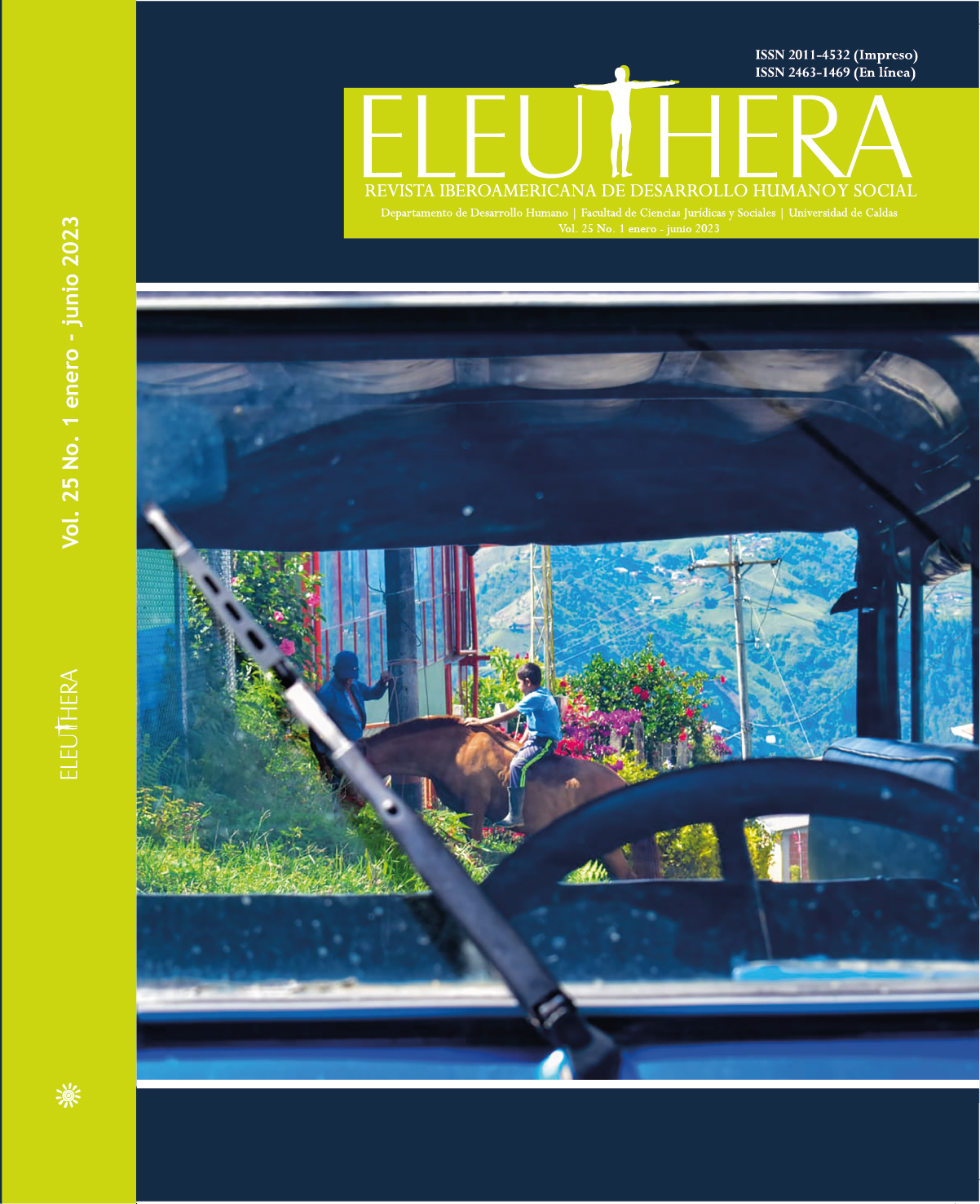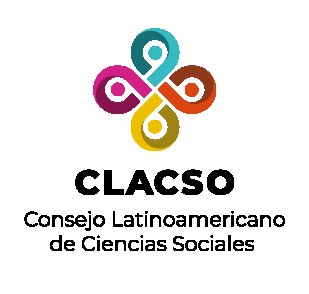Authors
Abstract
Objective: To measure and characterize energy poverty in the indigenous population of the state of San Luis de Potosí, Mexico. Methodology: A questionnaire-type instrument was designed,validated, and applied in the five indigenous municipalities with the highest rates of poverty and marginalization through random statistical sampling. The data collected were captured and statistically analyzed. Results: The most serious aspect of indigenous energy poverty is access to non-polluting fuels since the use of firewood in indigenous households reaches 93.2%, surpassing sub-Saharan Africa. Exposure to contaminating particles occurs throughout the life cycle (83.8%), mostly affecting the female gender. Conclusions: The exacerbated use of firewood as fuel has as a central element the income component beyond any association with traditional knowledge. Direct subsidies to the affected indigenous population could play a decisive role in ensuring a sustained energy transition.
References
Anderson, W., White, V. & Finney, A. (2012). Coping with low incomes and cold homes. Energy Policy, 49, 40-52. https://doi.org/10.1016/j.enpol.2012.01.002
Banco de Desarrollo de América Latina. (2013). Energía: Una visión sobre los retos y oportunidades de América Latina y El Caribe. CAF.
Berrueta, V., Serrano-Medrano, M., García-Bustamante, C., Astier, M. & Masera, O. (2015). Promoting sustainable local development of rural communities and mitigating climate change: the case of Mexico’s Patsari improved cookstove project. Climate Change, 140, 63-77. https://doi.org/10.1007/s10584-015-1523-y
Charlier, D., Risch, A. & Salmon, C. (2015). Les indicateurs de la précarité énergétique en France. Revue française d’économie, 4(30), 187-230. https://doi.org/10.3917/rfe.154.0187
Carrere, J., Peralta, A., Oliveras, L., López, M., Marí-Dell’Olmo, M., Benach, J. & Novoa, A. (2021). Energy poverty, its intensity and health in vulnerable populationsin a Southern European city. Gaceta Sanitaria, 35(5), 438-444. https://doi.org/10.1016/j.gaceta.2020.07.007
Conferencia de las Naciones Unidas sobre Comercio y Desarrollo. (2014). La búsqueda de un nuevo orden económico internacional. Reseña histórica de la UNCTAD en su 50º aniversario. ONU y UNCTAD. https://unctad.org/system/files/official-document/osg2014d1_es.pdf
Consejo Nacional de Evaluación de la política de Desarrollo Social (Coneval). (2015). Información de pobreza y evaluación en las entidades federativas. San Luis Potosí, pobreza municipal 2015. Coneval. https://www.coneval.org.mx/coordinacion/entidades/SanLuisPotosi/Paginas/principal.aspx
Comisión para el Desarrollo de los Pueblos Indígenas (CDI). (2017). Indicadores socioeconómicos de los pueblos indígenas de México, 2015. CDI.
Cumana, I., Gutiérrez, J., Miranda, M., Masera, O. y Tavera, A. (2013). Estufas eficientes de leña. Editorial Terracota.
García, R. (2014). Pobreza energética en América Latina. Cepal. https://www.cepal.org/es/publicaciones/36661-pobreza-energetica-america-latina
García, R. y Graizbord, B. (2016). Caracterización espacial de la pobreza energética en México. Un análisis a escala subnacional. Economía, sociedad y territorio, 16(51), 289-337. https://www.redalyc.org/pdf/111/11145317002.pdf
Gobierno Federal. (2019). Listado de zonas de atención prioritaria rurales 2020. Gaceta parlamentaria, 22(5361-I), 1-74.
Guzmán-Rosas, S. C. (2019). Diseño de políticas públicas y prototipos tecnológicos para generar energías renovables y reducir la pobreza energética. Proyecto de investigación registrado en el Sistema de Ciencia Tecnología e Innovación del Consejo Potosino de Ciencia y Tecnología, San Luis Potosí, México.
Guzmán-Rosas, S. C. (3 de junio de 2021). El impacto de la pobreza energética en la salud mental de las poblaciones vulnerables: Aproximaciones teórico-metodológicas para un análisis contextualizado. Conferencia presentada en el Colegio de Psicólogos y Profesionales de la Salud Mental AC, San Luis Potosí, México.
Guzmán-Rosas, S. C. (2022). Ethnicity as a social determinant of energy poverty: the case of Mexican indigenous population. Local Environment, 27(9), 1075-1101. https://doi.org/10.1080/13549839.2022.2100879
Hills, J. (2011). Fuel poverty: the problem and its measurement. CASE report, 69. Department for Energy and Climate Change.
Intelligente Energie Europe (IEE). (2009). WP2 – D5 – Diagnostic des causes et conséquences en Belgique, Espagne, France, Italie et Royaume-Uni. EPEE Project. WP2 - Deliverable 5.
Instituto Nacional de Estadística y Geografía (Inegi). (2015). Principales resultados de la Encuesta Intercensal 2015 San Luis Potosí. Inegi.
Instituto Nacional de Estadística y Geografía (Inegi). (2017). Anuario estadístico y geográfico de San Luis Potosí 2017. Inegi.
Instituto Nacional de Estadística y Geografía ((Inegi). (2018). Encuesta Nacional sobre Consumo de Energéticos en Viviendas Particulares (ENCEVI). Presentación de resultados. Inegi.
Jessel, S., Sawyer, S. & Hernández, D. (2019). Energy, Poverty, and Health in Climate Change: A Comprehensive Review of an Emerging Literature. Frontiers in Public Health, 7. https://doi.org/10.3389/fpubh.2019.00357
Ledesert, B. (2013). Liens entre précarité énergétique et santé: analyse conjointe des enquêtes réalisées dans l’Hérault et le Douaisis. Foundation Abbé Pierre.
Liddell, C. (2013). Introduction by Christine Liddell. In R. Walker, H. Thomson & C. Liddell (eds.), Fuel poverty 1991-2012. Commemorating 21 years of action, policy and research (p. 5). University of Ulster.
Liddell, C. & Guiney, C. (2015). Living in a cold and damp home: frameworks for understanding impacts on mental well-being. Public Health, 129(3), 191-199. https://doi.org/10.1016/j.puhe.2014.11.007
Liddell, C. & Morris, C. (2010). Fuel poverty and human health: A review of recent evidence. Energy Policy, 38(6), 2987-2997. https://doi.org/10.1016/j.enpol.2010.01.037
Lund, C., Brooke-Sumner, C., Baingana, F., Baron, E., Breuer, E., Chandra, P., Haushofer, J., Herrman, H., Jordans, M., Kieling, C., Medina-Mora, M., Morgan, E., Omigbodun, O., Tol, W., Patel, V. & Saxena, S. (2018). Social determinants of mental disorders and the Sustainable Development Goals: a systematic review of reviews. Lancet Psychiatry, 5(4), 357-69. https://doi.org/10.1016/S2215-0366(18)30060-9.
Malave, H. (1981). La OPEP y el Tercer Mundo en los conflictos de la crisis de energía. Comercio Exterior, 31(11), 1223-1230.
Marmot Review Team. (2011). The Health Impacts of Cold Homes and Fuel Poverty. Friends of the Earth & the Marmot Review Team.
Masera, O., Edwards, R., Armendariz, C., Berrueta, V., Johnson, M., Bracho, L., Riojas Rodríguez, H. & Smith, K. (2007). Impact of Patsari improved cookstoves on indoor air quality in Michoacán, Mexico. Energy for Sustainable Development, 11(2), 45-56. https://doi.org/10.1016/S0973-0826(08)60399-3
Masera, O., Ghilardi, A., Guerrero, G., Velázquez, A., Mas, J., Ordóñez, M., Drigo, R. & Trossero M. (2005). Fuelwood “hot spots” in Mexico: A case study using WISDOM. FAO Reports, Wood Energy Program & Forest Products Division.
Naranjo, F. (2010). La problemática de la salud, en relación con las cocinas de leña en áreas rurales a nivel mundial. Éxito empresarial, 123. 1-4.
Organización de las Naciones Unidas (ONU). (2015). Energía asequible y no contaminante. Objetivos de desarrollo sostenible. 17 Objetivos para transformar nuestro mundo. ONU.
Observatoire National de la Précarité Energétique (ONPE). (2015). Les chiffres-clés de la precarieté energetique. ONPE.
Organización Mundial de la Salud (OMS). (2007). Energía doméstica y salud. Combustibles para una vida mejor. OMS.
Owen, G. (2010). Review of the UK fuel poverty measure. Report for Ofgem. https://www.sustainabilityfirst.org.uk/images/publications/other/Review%20of%20the%20UK%20fuel%20poverty%20measure-%20for%20publication%20Feb%202011pdf.pdf
Programa de las Naciones Unidas para el Desarrollo (PNUD). (2018). Pobreza energética: análisis de experiencias internacionales y aprendizajes para Chile. PNUD.
Romieu, I., Riojas-Rodríguez, H., Marrón-Mares, A., Schilmann, A., Perez-Padilla, R. & Masera, O. (2009). Improved Biomass Stove Intervention in Rural Mexico Impact on the Respiratory Health of Women. American Journal of Respiratory and Critical Care Medicine, 180(7), 649-656. https://doi.org/10.1164/rccm.200810-1556OC
Ruiz, A. (2003). Tendencias recientes del mercado internacional del petróleo. Serie Recursos naturales e infraestructura. ONU y Cepal.
Smith, K., Mehta, S. & Maeusezahl-Feuz, M. (2004). Indoor air pollution from househould use of solid fuels. In M. Ezzati, A. D. López, A. Rodgers & C. J. L. Murray (eds.), Comparative quantification of health risks: global and regional burden of disease attributable to selected major risk factors (pp. 1435-1493). OMS.
Troncoso, K., Castillo, A., Masera, O. & Merino, L. (2007). Social perceptions about a technological innovation for fuelwood cooking: Case study in rural Mexico. Energy Policy, 35(5), 2799-2810. https://doi.org/10.1016/j.enpol.2006.12.011
Troncoso, K., Segurado, P., Aguilar, M. & Soares da Silva, A. (2019). Adoption of LPG for cooking in two rural communities of Chiapas, Mexico. Energy Policy, 133, 110925. https://doi.org/10.1016/j.enpol.2019.110925
Troncoso, K., Smith, K., Tagle, M., Galeano, A., Torres, R. y Soares da Silva, A. (2018). Afecciones respiratorias por el uso de leña y carbón en comunidades de Paraguay. Pediatría (Asunción), 45(1), 45-52. https://doi.org/10.31698/ped.45012018006
Wyatt, B. (s.f.). Causes of energy poverty and the impact of policy on citizen involvement. Stroud District Council, EU, Severn Wye. https://projects2014-2020.interregeurope.eu/fileadmin/user_upload/tx_tevprojects/library/file_1502890355.pdf

 PDF (Español)
PDF (Español)
 FLIP
FLIP





























